I published the ebook “Understanding Quantum technologies 2021” in september 2021, a free 838 pages in-depth book provided in digital format (PDF). It was the fourth edition of a book initially written in French.
We are one year later and here is the fifth edition of this unique book. Understanding Quantum technologies 2022 is a monster of 1132 pages. It is probably the only one that covers the topic so broadly with all its dimensions (history, science, technology, hardware/software, usages, societal, political) and for all quantum technologies (computing, telecommunications, cryptography, sensing, and even quantum matter). It is a “how it’s made” book that tries to unturn a lot of stones.
I realized that the book title may be perceived as being a fake premise. Indeed, you may not understand all the book content. Neither do I. In the quantum realm, understanding is more a journey than a destination!
Warning: this edition is superseded by the 2024 edition published in September 2024.
ebook format
As usual, this ebook is provided for free “as is” as a directly downloadable PDF file with no required personal data, with an optional lighter version for a readers like Amazon Kindle. But not in epub format. A paperback printed version is also available on Amazon sites.
Here are the various PDF versions available for download. I’d advise you to download the relevant files just before your start reading. The reason is I continuously update the document.
This ebook current version is 5.7, updated on January 30th, 2023.
- A4 paper size version, an ISO standard used worldwide with the exception of the USA and Canada that are using Letter format, with 8.5×11 inches (215.9 x 279.4 mm).
- Compressed A4 version split in two volumes fitting under 32 MB and designed for readers like Amazon Kindle.
- Letter format version that shrinks the top/bottom margins, for USA/Canada.
- Compressed Letter version in two volumes designed for readers like Amazon Kindle.
The page numbers of all these versions should be consistent. Let’s say for example that you can refer to page N in Letter Vol2 and it will match page N in the A4 Vol2 version. But the page numbers are not the same between the single and two volume versions.
You can then print the file wherever you can, in your organization or through an online ebook printing service of your choice depending on your location.
I also created a short version of the book in only 24 pages. It is an illustrated compilation of the key takeways from the end of each book’s parts.
The book is available since October 24th 2022 on most Amazon web sites for on-demand paperback edition orders. With amazon.com, it can be delivered nearly anywhere in the world.
This ebook is always a living beast that I constantly update it with corrections and some news as they come. Its updates log at its end lists the changes. You’ll be better off with downloading the book only when you start reading it, to ensure you always use the last version.
New features
Since this 5th edition is an update, what new stuff and nuggets is it bringing on your busy person plate? Here it is, sorted by order of appearance:
Why: new introduction, rearranged and updated the part on Moore’s law, removed the long abstract from the previous version.
History and scientists: updated scientists with more stuff on Marc Benioff, David Deutsch, David Hilbert, Daniel R. Simon, Erwin Schrodinger and new biographies for Andrew G. White, Gaston Floquet, Bruce Kane, Daniel Kleppner, Daniel Loss, Frank Wilczek, Gerhard Rempe, Herbert Walther, James Clarke, Jeff Kimble, Jian-Wei Pan, Leo Kouwenhoven, Menno Veldhorst, Steven Girvin, Rob Schoelkopf, Roy J. Glauber, Jay Gambetta, Alexandre Blais, Robert Raussendorf, Maciej Lewenstein, Ronald Walsworth and Philip W. Anderson. Plus more details on how research works, papers published and evaluated.
Quantum physics 101: added a table listing the various quantum physics postulates versions, added nuclear quantum numbers in quantization, added a large part on quantum matter, including on quantum batteries, time crystals and skyrmions.
Gate-based quantum computing: various updates on quantum gates, added illustrations on quantum computing dimensionality, better differentiation between quantum emulation and quantum inspired software.
Quantum computing engineering: simplified qubit type descriptions, update content on exotic qubits, better ex-plained how error rates are measured, many updates on quantum error corrections, definitions of FTQC, universal QC and LSQC. Described in detail the wherea-bouts of the Quantum Energy Initiative. Added a definition of quantum switch.
Quantum computing hardware: added vendor investment comparisons per type of qubit, types of use cases per qubit type, inventory of scalability challenges per type of qubit, rearranged and standardized the presentation of each qubit type with history, science, qubit operations, research and vendors. More schematics. More science on quantum annealing. Genealogy of superconducting qubits. Updated content on IBM, Google, Rigetti, IQM, OQC and added Atlantic Quantum, Baidu and Toshiba in superconducting computers vendors. Comparisons of different types of quantum dots spin qubits. Added Diraq in quantum dots spin qubits vendors, XeedQ in NV centers qubits vendors, It’s Q, Quantum Source Labs and TuringQ in photonic qubits vendors and Crystal Quantum Computing and Planqc in neutral atoms qubit vendors, and Hon Hai / Foxconn in the trapped-ions vendors list. Added coherent Ising machine in quantum photonics systems. Archer Materials, Atom Computing, Bleximo, BosonQ Psi, Nord Quantique and QBoson.
Quantum enabling technologies: rearranged the section on control electronics. Added ICE, Maybell Quantum and FormFactor, and updated myCryoFirm in cryostats vendors, Active Technologies, Keysight, QuantrolOx and Scalinq in control electronics vendors, Qubic Technologies, Raditek, QuinStar Technology, RF-Lambda, Wenteq Microwave Corp, Holzworth Instrumentation, apitech, Analog Quantum Circuits, CryoHEMT and Silent Waves in cryoelectronics vendors, CryoCoax, XMA and Rosenberger Group in cable and filtering vendors and Alcyon photonics, Teem photonics and Scintil Photonics in photonic enabling technologies vendors, AnaPico, Diatope, HiQeTe Diamond, Orsay Physics, QuantTera and Quantum Diamant in other enabling technologies vendors. Added a new part on fabs, processes and manufacturing tools. Added manufacturing tools vendors like BESI, PlasmaTherm, Picosun Group, NanoAcademic Technologies and QuantCAD. Updates on raw materials.
Quantum algorithms: added a part on tensor networks. Significant updates on quantum machine learning.
Quantum software development tools: updates on emulation software, restructured and updated the part on benchmarking.
Quantum business applications: updated all vertical case studies lists. Added Arclight Quantum, Allosteric Bioscience, Artificial Brain, ColibrITD, Dirac, Foqus, GenMat, Good Chemistry Company, Ingenii, Qbraid, QEDma, Qoherent, Quanscient, Quantagonia, Sanctuary, SavantX, Tinubu Software and Turing in the software and tools vendors inventory. Created a section on IT service vendors working on quantum technologies. Added DN-Quantum Computing, Kvantify, Plantagenet Systems, Protiviti, Psi-Ontic, Quantum Computing Engineering, Quanvia, quGeeks, Quant-X Security & Coding, Qubitech and Unitary Zero Space. Updated information on AegiQ, Azurlight Systems, Cogniframe, exaQ.ai, Horizon Quantum Computing, HQS Quantum Simulations, Multiverse Computing, and Nomidio, Phasecraft, OTI Lumionics, Q.ant, Quantum Computing Inc, QunaSys, Q-Ctrl, Strangeworks and Terra Quantum.
Quantum telecommunications and cryptography: added a part on quantum photon sources and detectors in the QKD section, improved description of trusted nodes and repeaters, rearranged and enriched the quantum interconnect and telecommunication part. Update on PQC with NIST 2022 selection results. Added Abelian, ComScire in QRNG vendors, Bohr Quantum Technology, Photoniq and Entanglement Networks in quantum telecommunications, NodeQ, Patero, QANplatform, Quantum Collective, Sandbox AQ, Synergy Quantum and ThinkQuantum in quantum telecommunications and cryptography vendors. Updated information on Post-Quantum, IDQ, Qnu Labs, QphoX and, Qunnect.
Quantum sensing: added new parts on quantum sensing taxonomy and on quantum pressure sensing. More details on quantum thermometers. Added OK Quantum and Zero Point Mo-tion in quantum gravimeters and accelerometers, Improved the technical de-scription of a quantum gravimeter. QuSpin, Siloton, QLM Technology and Mag4Health in imaging sensors and qdm.io and Elta Systems in quantum magne-tometers. Updated information on Chipiron.
Quantum technologies around the world: updates in investments data, new part on disappeared startups, SPACs, government spending and quantum national initiatives rationales. Added Finland, Norway, Hungary, Ireland, and Qatar in countries overview and Intqlabs startup in UAE. Updated nearly all other countries quantum activities. Added a map of Canada’s quantum ecosystem.
Quantum technologies and society: added EFEQT in scientific education and on quantum technologies marketing.
Bibliography: reshuffled the quantum events section, added an events timeline.
Glossary: added Ansatz, Bell state, Chi (nonlinearity order), Circuit, Coulomb blockade, crosstalk, CVD, Floquet code, EBL, electron gas, FTDQC, Flux biasing, Gaussian Boson Sampling (GBS), Hall effect, Heterodyne and Homodyne measurements, I/Q mixer, Jaynes-Cummings Hamiltonian, JPA, Leggett-Garg inequality, MBE, Magneto-Optical Trap, mesoscopic, metal layers, microring resonator, Mott insula-tor and Mott transition, Mutually unbiased bases, no-go theorem, on-premises, ODMR, paramp, photolithography, Purcell effect, Purcell filter, purification, PVD, Quantum Hall effect, QHO, QND, QSVT, QUBO, quantum steering, quantum switch, Ramsey experiment, relaxation, Renyi entropy, RIE, Sapphire, surface code, SVD, time crystals, time reversal, TWPA, Stark shift, Unruh effect and Zeeman cooling.
I also added over 900 figure captions with sources and sorting out how figures are referenced in the text (mostly).
Uniqueness
If you discover this book for the first time, here is how it is different from most books on quantum technologies and quantum computing.
- It provides a 360° approach of quantum technologies encompassing all dimensions: history, science, technology, engineering, economy, geopolitics and societal impact.
- It starts with an extensive review of quantum physics history and its key contributors.
- It contains some quantum physics 101 scientific content with rarely covered aspects like quantum matter.
- It extensively covers quantum engineering and enabling technologies in an unique way with a lot of details on cryogeny, cryo-electronics, cabling and lasers.
- You will learn a lot about the various qubit types around with their strengths and weaknesses.
- It studies the scalability challenges with quantum computing, particularly with its energetic dimension.
- It investigates the raw materials used in quantum technologies, their origin, scarcity and environmental impact and even manufacturing techniques of semiconductors used in quantum technologies.
- It looks at the great variety of quantum algorithms and their usefulness, including their potential real speedups. It includes details on how data is loaded in a quantum program and their results exploited. It also describes how quantum computers are deployed in the cloud.
- It describes the offering from over worldwide 550 vendors in computing, telecommunications, cryptography, sensing and enabling technologies (+100 vs 2021).
- It contains a lot of fact checking on vendors and scientists claims whenever possible, like on quantum advantages and supremacies.
- It also covers quantum telecommunications, cryptography and sensing.
- I even dig into the unconventional computing that sits in between classical and quantum computing and could somehow compete with both.
- It deals with quantum technologies geopolitical and societal aspects, including quantum strategies from over 20 countries, quantum foundations and the philosophical debates on quantum physics realism, on the emerging debate on quantum technologies ethics and on gender imbalance in this new field.
- It contains a unique part on quantum fake sciences including quantum medicine, positioned at the end of ebook in order to avoid the Streisand effect. This part also contains a “fake fake-science” part on quantum management which is not serious at all.
Although its a long and thick document, you can cherry pick what you need its various parts.
Audience
This ebook target audience is broad and obviously, I will not decide who can or cannot read it. Some parts are accessible to non-scientific readers, particularly the geopolitics and societal parts at its end. Other parts require some scientific background at the licence level.
The first target audience is made of computer science specialists and software developers who want to understand the whereabouts of quantum computing hardware, software and use cases. It is also made for students and active professionals who are attracted by quantum technologies and would like to know where they could develop some skills and shape their new job or even businesses. At last, it is also interesting for many quantum researchers, engineers and entrepreneurs since most of them are specialized in a narrow field while this book provides an up to date 360° view on all quantum technologies.
Addressing complexity
Quantum technologies and quantum computing are particularly complex and counterintuitive to understand. I try in this ebook to speak a language as accessible as possible to computer science and information technology specialists. Like, for example, explaining “end-to-end” how data is flowing in and out of a quantum computers, including for quantum annealers and quantum simulators, not just gate-based quantum computers. And also, describing ambiguous terms such as amplitude or non-linearity, which have different meanings depending on the technical context.
Readership is aided by some other artefacts:
- Many detailed schematics, most of them being custom made.
- Many plain language definitions with an over 300 terms glossary.
- An extensive bibliography of over 4000 referenced links.
- Many common sense questions asked and answered.
- Each part ends with a summary of about 7 key takeaways.
The book contains over 440K words vs 293K words for the 2021 edition.
Business model
I have published tens of free books like this since 2006. I favor distribution over revenue. I love open science. I benefited from it when searching for scientific data. Otherwise, I sell my time in a rather traditional way with speaking, training and consulting missions. Another way to describe my business model is I give away the long version and sell the short one. Since with businesses, time is money and students have time but no money, all things go round. And this is particularly true with quantum technologies.
Reviewers
This book and its previous editions benefited from the help of many scientists and entrepreneurs. They proofread the document.
This edition reviewers were Jean-Philippe Fauvarque (Plassys-Bestek, for the manufacturing part), Antoine Gras (Alice&Bob, also for the fabs part), Frédéric Wyczisk (for the quantum matter part), Michel Kurek (the proof-reading master who does an incredible work spotting all the details), Antoine Browaeys (Pasqal/IOGQ, neutral atoms computing), Bruno Desruelle (ixBlue, quantum sensing), Christophe Jurczak (updated foreword), Marco Fellous-Asiani (energetics, control electronics, superconducting qubits), Clément Barraud (MPQ, quantum matter), Georges-Olivier Raymond and Nicolas Proust (Pasqal, cold atoms qubits), Léa Bresque (Institut Néel, Quantum technologies energetics), Luc Gaffet (Air Liquide, cryogeny), Olivier Hess (Atos, software), Jérémie Guillaud, Blaise Vignon (Alice&Bob, superconducting qubits), Thomas Ayral (Atos, various pats), Loïc Chauvet (CACIB, software tools), Daniel Vert (CEA, quantum annealing), Xavier Vasques and Jean-Michel Torres (IBM, on IBM quantum software stacks), Stéphane Louise (CEA List, on algorithms), Marc Kaplan (VeriQloud, quantum telecommunication and cryptography), and Maud Vinet (history, silicon qubits).
You can also send me feedback, corrections and suggestions. I update the book content whenever required until the end of the year. Then, I start to consolidate data to prepare the next edition. In the 2022 case, I started the update in March 2022.
Cheers!
Olivier Ezratty
September-October 2022
![]()
![]()
![]()
Reçevez par email les alertes de parution de nouveaux articles :
![]()
![]()
![]()







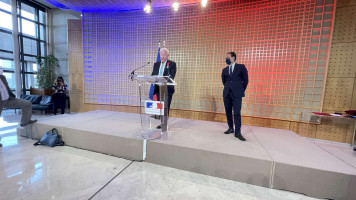
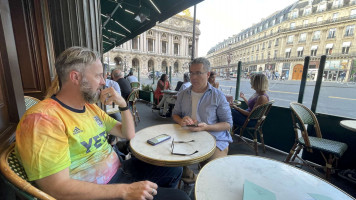







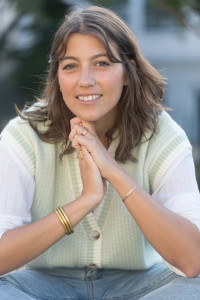





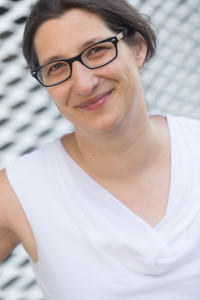
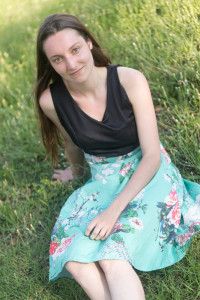

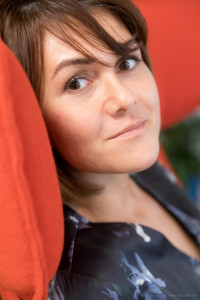
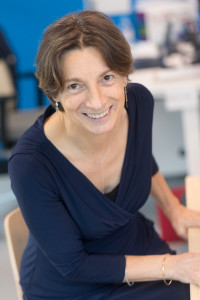



 Articles
Articles
Bonjour cher Olivier,
Bravo pour ce travail titanesque. Une simple question: Existe-t-il une version en francais de ce livre?
Merci.
Alain B.
Non, désolé !
Il n’existe pas de système de traduction automatique d’un bouquin très technique de 1100 pages qui fonctionne convenablement et ne nécessite pas des dizaines d’heures de relecture et correction.
Ni de gens capables de le faire à la main en quelques jours.
La dernière version de mon livre en français est l’édition de 2020, maintenant périmée.
Dear Oliver,
I really appreciate your hard works to publish and update it. and most of all, sharing knowledges to the publics for free.
All the best!
Best regards,
Sangyun
Thanks for this nice feedback Sangyun! I’m indeed updating the book for significant events until the end of the year. Then start over preparing the next edition!